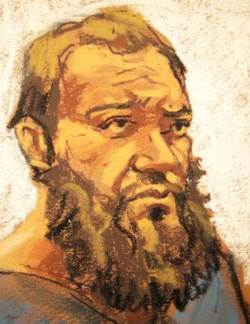 The denouement in the hunt for the man, Mohanad Mahmoud Al Farekh, who was nabbed
The denouement in the hunt for the man, Mohanad Mahmoud Al Farekh, who was nabbedKeep yer hands where we can see 'em, if yez please!
last year in Pakistain based on intelligence provided by the United States, came after a yearslong debate inside the government about whether to kill an American citizen overseas without trial -- an extraordinary step taken only once before, when the Central Intelligence Agency killed the radical holy man Anwar al-Awlaki
... Born in Las Cruces, New Mexico, zapped in Yemen, al-Awlaki was a dual citizen of the U.S. and Yemen. He was an Islamic holy man who was a trainer for al-Qaeda and its franchises. His sermons were attended by three of the 9/11 hijackers, by Fort Hood murderer Nidal Malik Hussein, and
UndieboomerUmar Farouk Abdulmutallab. He was the first U.S. citizen ever placed on a CIA target list...
in Yemen
...an area of the Arabian Peninsula sometimes mistaken for a country. It is populated by more antagonistic tribes and factions than you can keep track of. Except for a tiny handfull of Jews everthing there is very Islamic...
in 2011.
Mr. Farekh's court appearance also came as the B.O. regime was struggling to fashion new guidelines for assassinations. The decision to use an allied intelligence service to arrest Mr. Farekh has bolstered a case made by some that capturing -- rather than killing -- myrmidon suspects, even in some of the world's most remote places, is more feasible than the orders for hundreds of drone strikes might indicate.
"This is an example that capturing can be done," said Micah Zenko, a scholar at the Council on Foreign Relations who studies counterterrorism strikes.
No one denies it can be done in some cases. It can't be done in all cases.
The B.O. regime's discussions about the fate of Mr. Farekh, who used the nom de guerre Abdullah al-Shami, began in earnest in 2012, and in the months that followed the C.I.A. and the Pentagon ramped up surveillance of his movements around Pak tribal areas.
Drones spotted him several times in the early months of 2013, and spy agencies used a warrant issued by the Federal Intelligence Surveillance Court to monitor his communications. The Pentagon nominated Mr. Farekh to be placed on a so-called kill list for terrorism suspects; C.I.A. officials also pushed for the White House to authorize his killing.
But the Justice Department, particularly Attorney General Eric H. Holder Jr., was skeptical of the intelligence dossier on Mr. Farekh, questioning whether he posed an imminent threat to the United States and whether he was as significant a player in Al Qaeda as the Pentagon and the C.I.A. described. Mr. Holder and his aides also thought it might be possible to capture Mr. Farekh and bring him to trial.
The discussions took place less than two years after the 2011 assassination of Mr. Awlaki, and Justice Department officials were sensitive to the criticism leveled against the department for approving that strike.
"Because he was an American citizen, we needed more information," said one former bigwig. "Post-Awlaki, there was a lot of nervousness about this."
Another complicating factor emerged in May 2013, when the president imposed new rules for assassinations and announced some of the rules in a speech at National Defense University.
At the time of the speech, the White House also announced that four American citizens had been killed in drone strikes during Mr. Obama's time in office -- but that only Mr. Awlaki had been specifically targeted. The three others had been killed in strikes aimed at others.
In a classified order finalized at the time of Mr. Obama's speech, the White House directed that the Pentagon, rather than the C.I.A., should conduct lethal strikes against American citizens suspected of terrorism. That provision was designed, at least in theory, to allow government officials to speak more freely about any operation after it had occurred.
But the Pentagon has long been banned from conducting drone strikes in Pakistain, part of a 2004 deal with Pakistain that all such attacks be carried out by the C.I.A. under its authority to take covert action -- allowing Pakistain to publicly deny any knowledge of the strikes and American officials to remain silent.